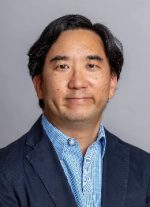Poster title
Teishin, Press Tack Needles and Magnet Therapy : An Attractive Treatment Combination for Pediatric Achalasia ?
Presentation summary
Pediatric achalasia is a rare esophageal motility disorder. Symptoms include dysphagia, chest pain, and reflux.Pathogenesis features loss of ganglion cells in the Auerbach plexus, impaired lower esophageal sphincter (LES) relaxation, disrupted esophageal peristalsis, and esophageal dilation. Interventions include pneumaticdilation, Heller myotomy, and peroral endoscopic myotomy.
While they relieve dysphagia, none reduce pain ; most exacerbate reflux ; and benefits fade and diminish with reintervention.
Acupuncture for achalasia remains underexplored. Acupuncture decreases LES pressure, GERD, pain, andinflammation, indicating a potential alternative. We report a case where teishin, Pyonex, and magnet therapywere used to manage achalasia twice over 2 years with normalization of timed barium esophagram (TBE) andcancellation of surgery.
A 9-year-old needle-averse female with achalasia presented to clinic 7 weeks after dilation because dysphagia,early satiety, bloating, poor weight gain, and chest pain became worse.
Teishin was applied at LI4/LV3 andPC6/SP4, and Accu-band 800 magnets tonified LI4/LV3 and PC7/ST42. Symptoms resolved and weightincreased from the 5th to the 9th percentile over 7 sessions in 4 months.
Symptoms returned 17 months later, and weight fell to the 6th percentile. On TBE, no barium passed into thestomach at 1 and 5 minutes. Over 11 sessions (20 weeks), Pyonex needles were inserted at LI4/LV3, LV4/LU5,LI10, PC6/SP4, ST36 and retained for 2-3 days. Magnets were placed at LI4/LV3 and PC7/ST42 after Pyonex removal. Symptoms resolved, and weight improved to the 15th percentile. Repeat TBE showed > 50%decrease in barium height at 1- and 5-minutes, barium height of 3 cm at 5 minutes, and normal passage of barium, all indicators of success.
This case demonstrates a cost-effective, low-risk treatment of pediatric achalasia and a need to explore futureclinical trials.
Parental consent was obtained prior to submission of this report.
Conflict of interest
No

christopher.lee@cchmc.org
MD (Cincinnati Children’s Hospital Medical Center, Cincinnati, OH, USA).
My clinical specialties are pediatric anesthesia and pain medicine, ultrasound-guided regional anesthesia, and medicalacupuncture.
I am interested in improving patient health and quality of life through minimally invasivetechniques and modalities that leverage the patient’s native mechanisms of healing and health.
My research areas include medical acupuncture, acute pain, chronic pain, outcomes research and quality improvement.
When I’m not at work, I enjoy watching my kids play ice hockey and volleyball. I also enjoy playing ping-pong, tennis, tai chi, taekwondo, hiking and being in nature.